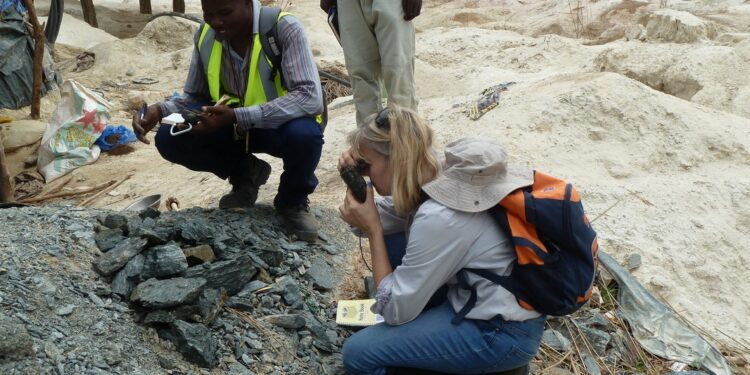Mako Gold Limited (ASX: MKG) has commenced a multi-rig, 25,000m auger drilling programme on the company’s 90% owned flagship Napié Project in Côte d’Ivoire.
Napié hosts a +23km soil anomaly and coincident 30km-long Napié shear and associated splays.
“We are pleased exploration has recommenced on the Napié Project after a particularly long wet season,” Managing Director, Peter Ledwidge, said.
“The large multi-rig auger drilling programme will provide a very useful tool to narrow down the large soil anomalies at Napié for further resource drilling and should help to unlock the district scale multi-million-ounce potential of the Napié Project.
“At certain locations the soil anomalies are up to two km wide and augering is more cost effective when compared with a fence of RC drill holes across such widths.
“The object of the auger program is to find footprints of other deposits similar to Tchaga or Gogbala on the permit. The first phase of the programme will include orientation auger drilling over Tchaga and Gogbala to identify the auger footprints for these deposits, following the recent delivery of the 868koz Inferred maiden MRE at Tchaga and Gogbala.1 Auger drilling will then proceed on selected grids to identify the “sweet spot” for future RC resource drilling,
“The auger programme will require supervision from one geologist, which will allow us to deploy the rest of our geology team to map the granites on the Napié and Korhogo projects. The object of that program will be to map and rock chip sample the greenstone/granite contact and to look for pegmatites associated with the granites.”
Historic auger drilling on certain portions of the permit have outlined anomalies associated with shears and faults at Napié.
Orientation auger drilling on the Tchaga and Gogbala deposits, which form the basis of the maiden 868koz MRE, will highlight the auger signature of these deposits. Once the orientation drilling is complete on the Tchaga and Gogbala deposits, all drill rigs will be mobilised to sequentially complete each planned auger grid.
Phase 1 of the programme will commence with 400m spaced lines with samples collected every 100m along the line.
The phase 2 infill programme will consist of 200m spaced lines with samples collected every 50m from prospective areas identified in Phase 1.
The purpose of the programme is to demonstrate the multi-million-ounce gold potential of Napié by identifying several footprints equal or larger than Tchaga and Gogbala along the extensive 30km shear and associated faults at Napié.
An RC drilling programme will be planned on the best auger anomalies to prioritise the next resource drill targets.
The auger programme, by vectoring in on the large soil anomalies, will reduce the number of RC/DD drill holes required to expand the current MRE. It is expected mineralisation from broad soil anomalies will be narrowed down which should reduce the number of drill holes required to test targets along drill fences. This will expedite resource expansion and reduce RC/DD drilling costs for future resource updates.
Five Landcruiser-mounted auger rigs will be used to cost effectively fast-track the drilling programme. All of the auger rigs will work together on each grid in order to systematically ship the samples to the lab as soon as the drilling is completed on each grid. This will optimise the assessment of results in preparation for planned follow-up RC drilling.
Mako geologists are currently on the ground mapping and rock chip sampling the greenstone/ granite contacts of the Napié and Korhogo projects, which typically are ideal places for high-grade gold deposition. Geologists will also map and rock chip sample all granites at Napié and Korhogo to search for pegmatites associated with the granites, in order to evaluate the potential for critical minerals.
For further information please visit: https://www.makogold.com.au/











